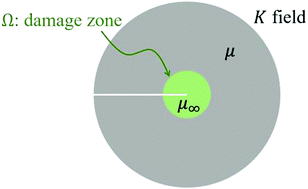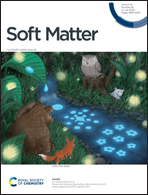Time dependent fracture of soft materials: linear versus nonlinear viscoelasticity
Abstract
Toughness of soft materials such as elastomers and gels depends on their ability to dissipate energy and to reduce stress concentration at the crack tip. The primary energy dissipation mechanism is viscoelasticity. Most analyses and models of fracture are based on linear viscoelastic theory (LVT) where strains are assumed to be small and the relaxation mechanisms are independent of stress or strain history. A well-known paradox is that the size of the dissipative zone predicted by LVT is unrealistically small. Here we use a physically based nonlinear viscoelastic model to illustrate why the linear theory breaks down. Using this nonlinear model and analogs of crack problems, we give a plausible resolution to this paradox. In our model, viscoelasticity arises from the breaking and healing of physical cross-links in the polymer network. When the deformation is small, the kinetics of bond breaking and healing are independent of the strain/stress history and the model reduces to the standard linear theory. For large deformations, localized bond breaking damages the material near the crack tip, reducing stress concentration and dissipating energy at the same time. The damage zone size is a new length scale which depends on the strain required to accelerate bond breaking kinetics. These effects are illustrated by considering two cases with stress concentrations: the evolution of spherical damage in a viscoelastic body subjected to internal pressure, and a zero degree peel test.



 Please wait while we load your content...
Please wait while we load your content...
